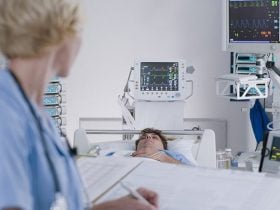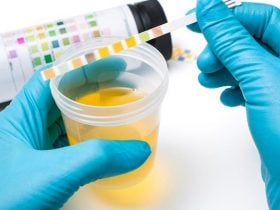Skin Changes, Swelling and Redness

The skin is the most common site of the infection. As necrotizing fasciitis worsens, the skin begins to develop certain changes in its appearance. For example, skin ulcers [1], discoloration, and blisters may develop in people who have the condition. These changes are usually a sign of necrosis, or tissue damage. Contact your dermatologist immediately if you notice any changes to your skin’s appearance.
The bacteria responsible for causing necrotizing fasciitis is known as group A Streptococcus. When this bacteria infects the skin, the region is usually characterized by noticeable warmth, swelling and prominent redness. This is an inflammatory response that occurs because the body is trying to fight off the infection. However, this response is not enough to prevent the spread of the bacteria. It would help to contact your doctor immediately if your swelling or redness persists for a long period.













